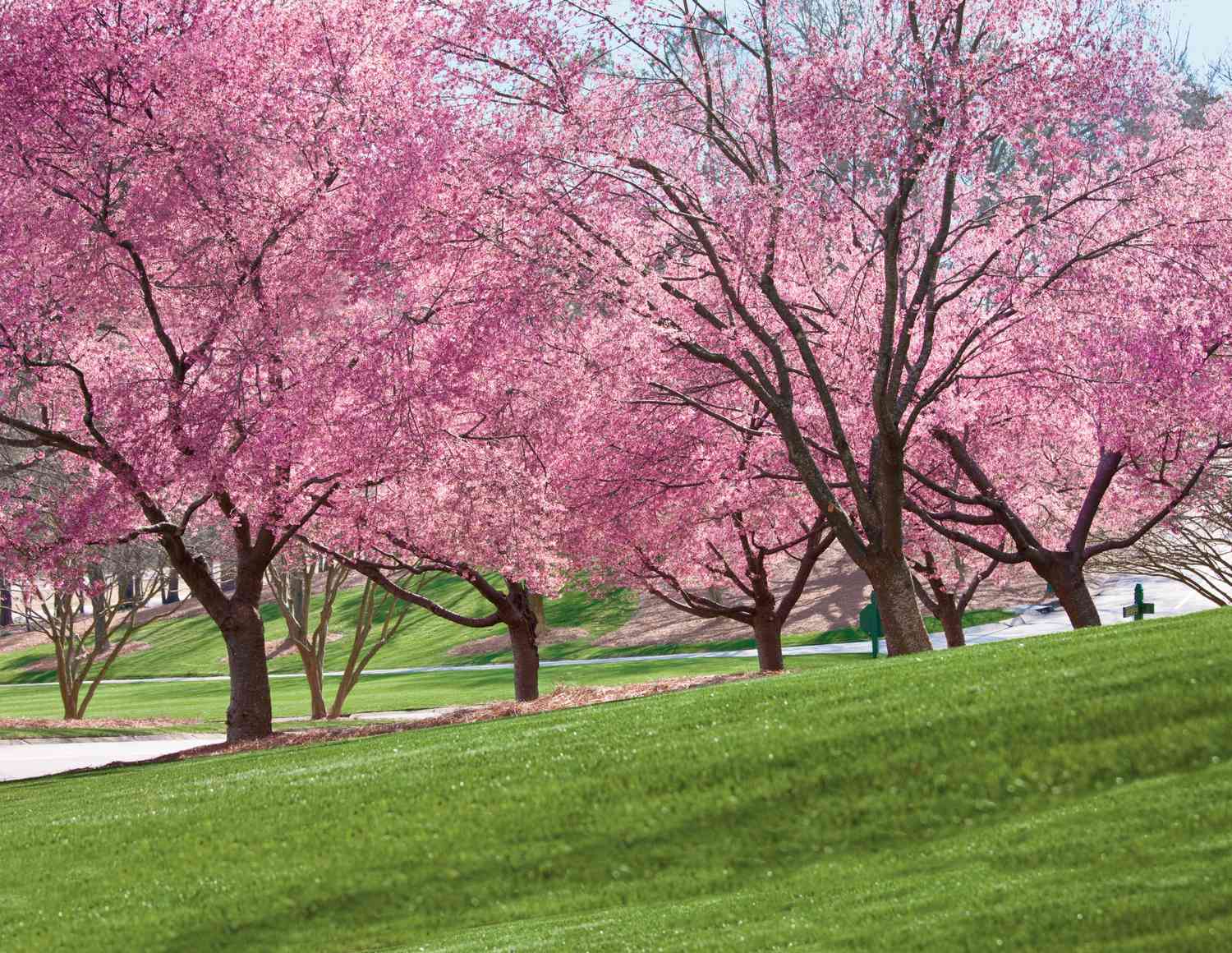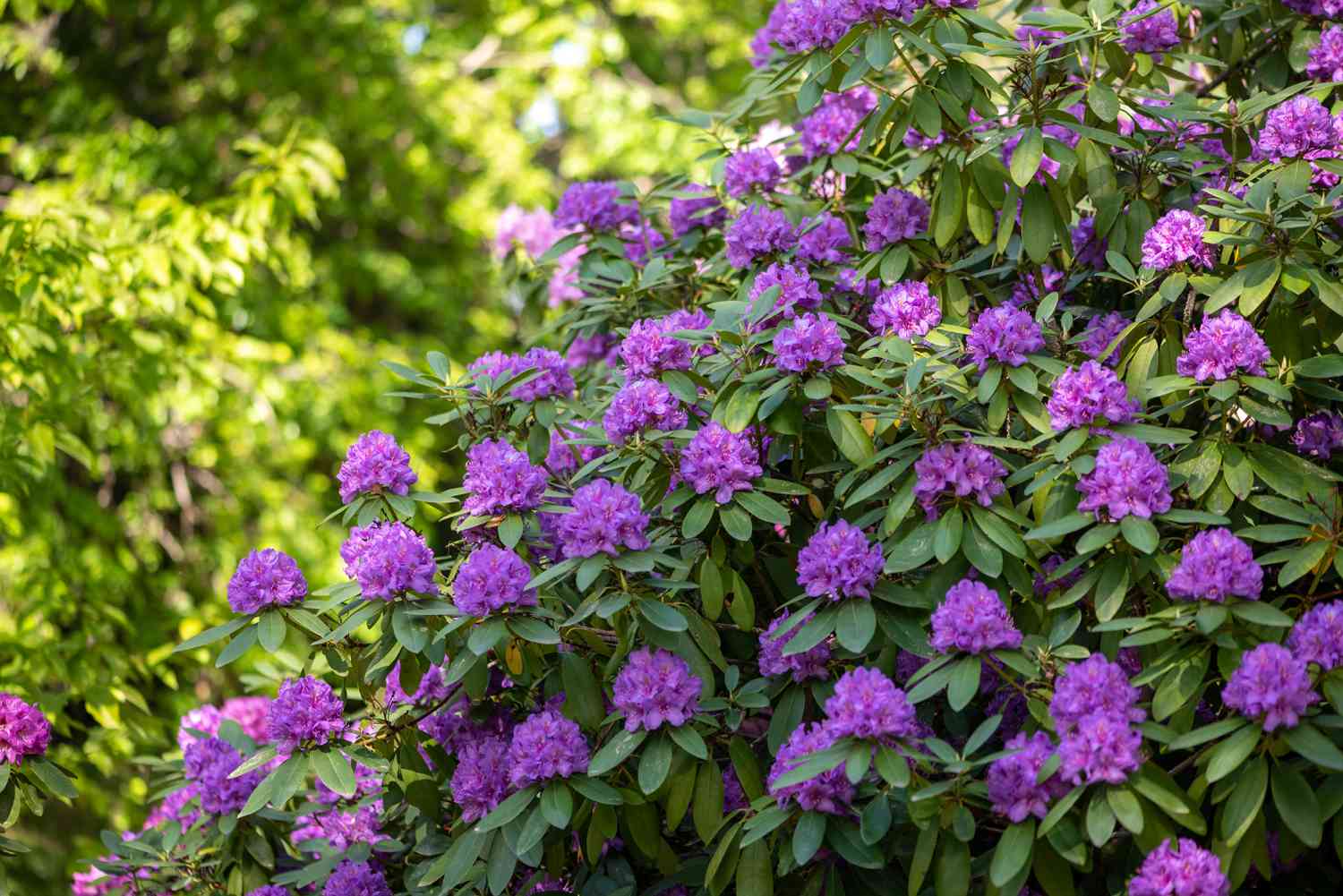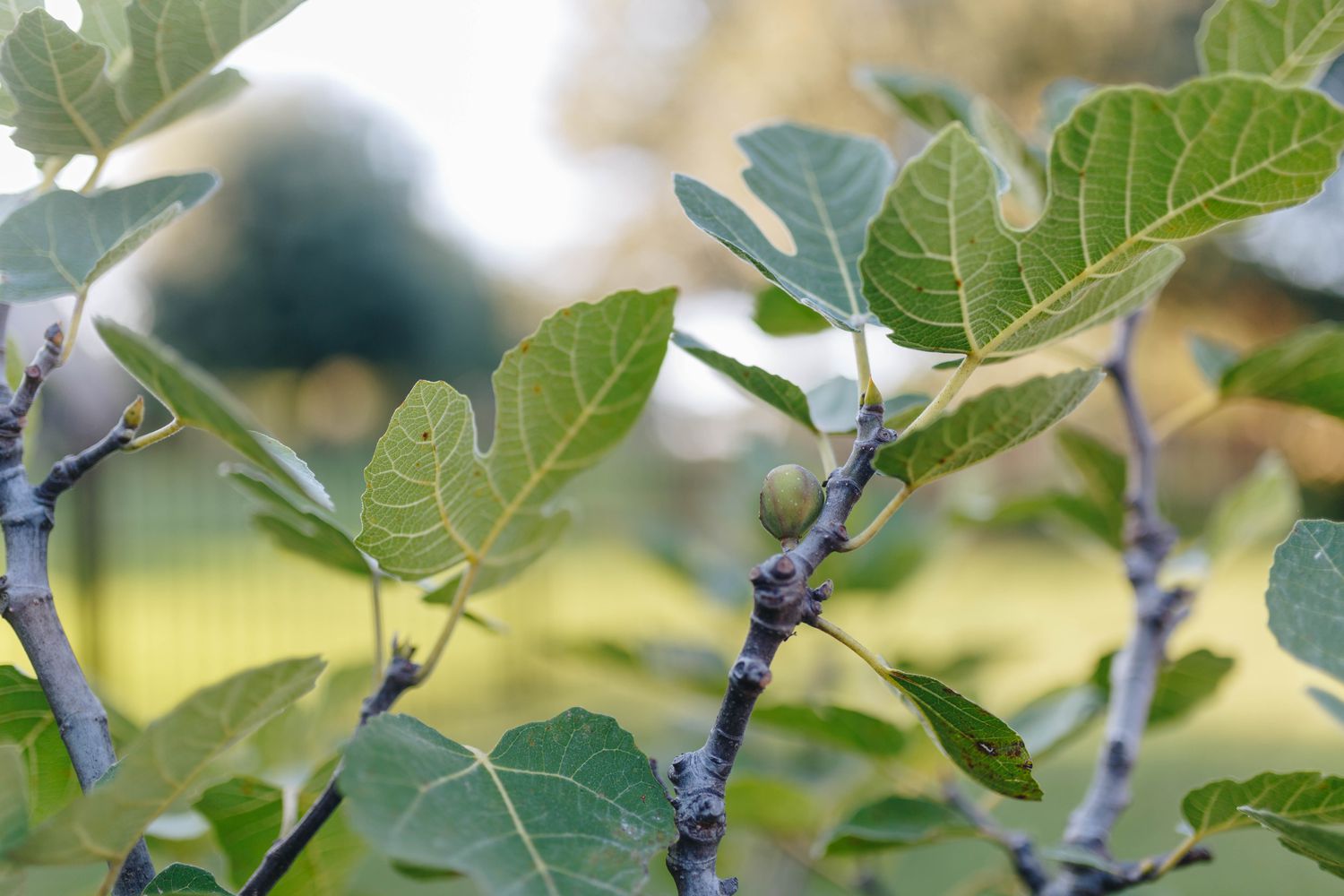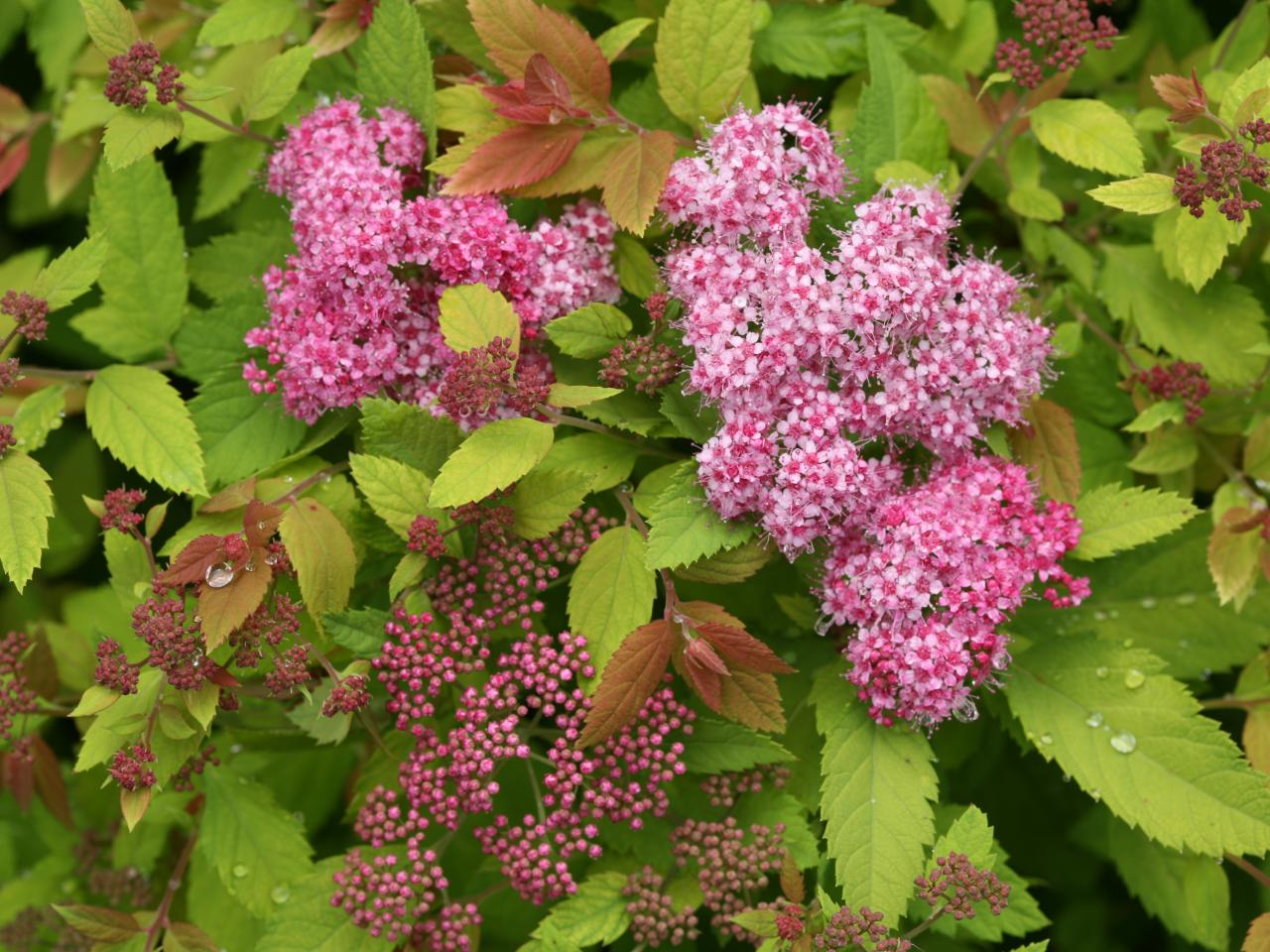Home>Types of Gardening>Ornamental Gardening>How Tall Should Rhodium Shrubs Grow
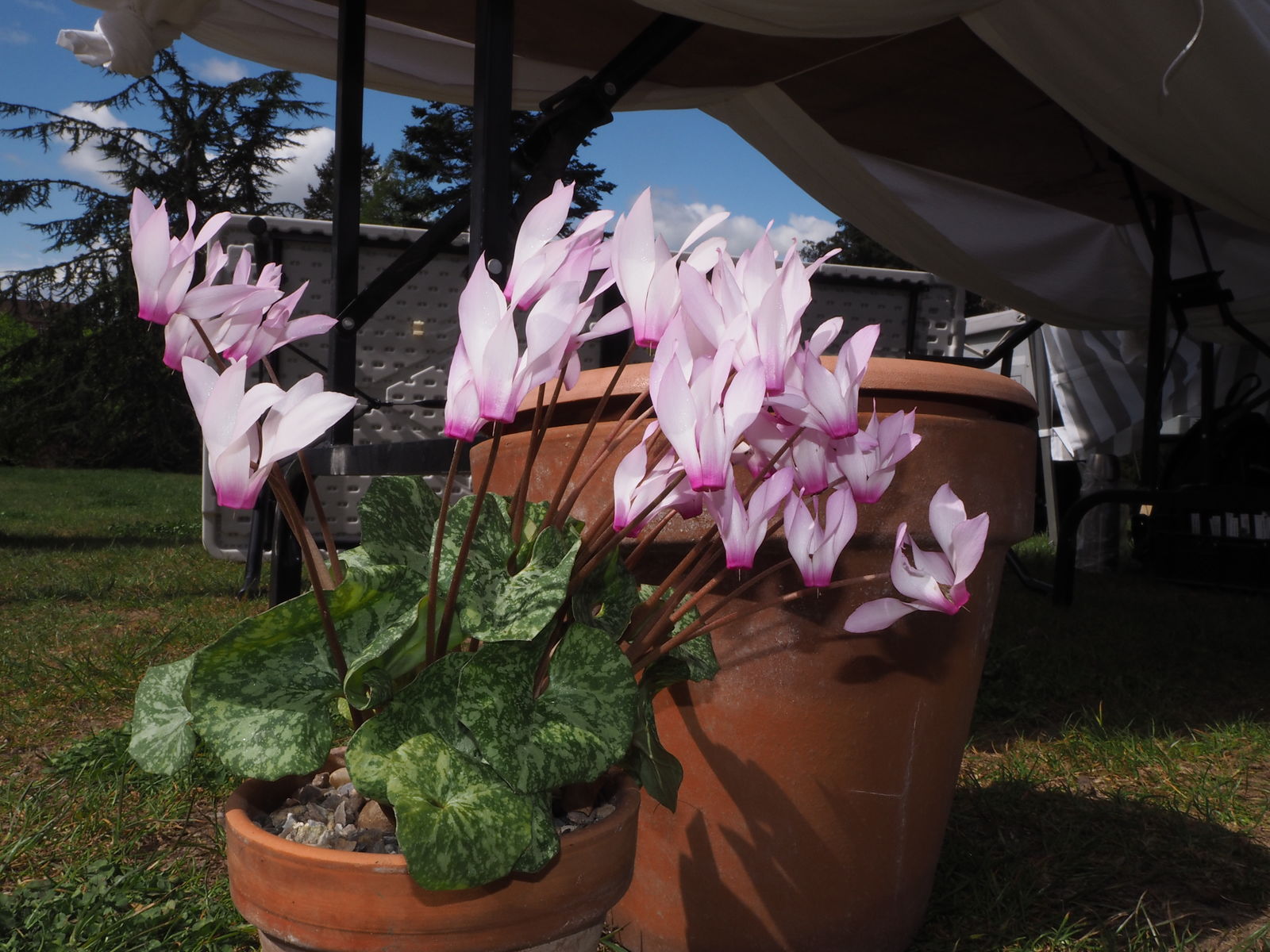

Ornamental Gardening
How Tall Should Rhodium Shrubs Grow
Modified: February 7, 2024
Discover how tall Rhododendron shrubs should grow in your ornamental garden. Learn about the ideal height for these beautiful plants and create a stunning landscape.
(Many of the links in this article redirect to a specific reviewed product. Your purchase of these products through affiliate links helps to generate commission for Chicagolandgardening.com, at no extra cost. Learn more)
Table of Contents
Introduction
Welcome to the fascinating world of ornamental gardening! If you have an affinity for nature and aesthetics, then growing and nurturing ornamental plants can be a joyful and rewarding experience. One of the most versatile and visually appealing plants that you can add to your garden is the Rhodidum shrub.
Rhodidum shrubs, also known as Rhodie shrubs, are prized for their vibrant blooms, green foliage, and ability to add a touch of elegance to any landscape. These shrubs are native to several regions around the world and are widely cultivated for their stunning flowers and ornamental foliage.
One of the key considerations when growing Rhodidum shrubs is determining the optimal height range for these plants. Proper height regulation is crucial to ensure their health, aesthetics, and overall performance in your garden. In this article, we will explore the factors that influence the height of Rhodidum shrubs, the optimal height range, the effects of inadequate height, and how you can encourage proper growth and height in these stunning plants.
So, whether you’re a seasoned gardener or just starting out, join us as we delve into the world of Rhodidum shrubs and discover the secrets to growing these beautiful plants to their full potential.
Factors influencing the height of Rhodidum shrubs
The height of Rhodidum shrubs can vary greatly depending on several factors. Understanding these factors is key to ensuring the proper growth and development of these plants in your garden. Let’s explore some of the main elements that influence the height of Rhodidum shrubs:
- Species and Varieties: The specific species and varieties of Rhodidum shrubs you choose to plant will have a significant impact on their height. Different species and cultivars have varying growth habits and potential heights. It’s essential to select the right species or variety that matches your desired height preferences.
- Environmental Conditions: The environment in which Rhodidum shrubs grow plays a crucial role in their height. Factors such as sunlight exposure, temperature, humidity, and soil conditions can all impact their growth. Rhodidum shrubs prefer partially shaded areas with well-draining soil. An optimal combination of these environmental factors will contribute to healthy and controlled growth.
- Pruning and Training: Proper pruning and training techniques can help shape the height of Rhodidum shrubs. Regular pruning can promote bushier growth and control the height, while selective pruning can help maintain a desired shape and size. Training methods like espalier or topiary can also be employed to achieve specific height goals.
- Nutrition and Watering: Providing adequate nutrition and water to Rhodidum shrubs is essential for healthy growth. Proper feeding with balanced fertilizers and regular watering will ensure optimal height development. However, be cautious not to over-fertilize or overwater, as this can lead to excessive growth or weak plant structure.
- Plant Age and Health: The age and overall health of the plants can influence their height potential. Younger plants tend to be more vigorous and can grow taller, while older plants may have a more established height. It’s crucial to choose healthy plants and provide them with the necessary care and maintenance to encourage optimal growth.
By considering these factors and implementing appropriate measures, you can effectively manage and control the height of your precious Rhodidum shrubs. Now that we understand the various influences on their height, let’s explore the optimal height range for Rhodidum shrubs in the next section.
Optimal height range for Rhodidum shrubs
The optimal height range for Rhodidum shrubs can vary depending on personal preferences, the purpose of the planting, and the specific species or variety being cultivated. However, in general, Rhodidum shrubs tend to fall within a range of 2 to 6 feet (60 to 180 cm) in height.
At the lower end of the height spectrum, Rhodidum shrubs that stay around 2 to 3 feet (60 to 90 cm) are often favored for border plantings, rock gardens, or areas where a more compact and low-maintenance plant is desired. These shorter varieties can also be suitable for container gardening or smaller landscapes where space is limited.
On the other hand, taller Rhodidum shrubs that reach heights of 4 to 6 feet (120 to 180 cm) are often chosen for creating hedges, privacy screens, or as focal points in the garden. These taller varieties can provide a stunning backdrop or a sense of enclosure in larger landscapes.
It’s important to note that while Rhodidum shrubs have a natural height range, their growth can be influenced by the factors discussed earlier. With proper care, pruning, and maintenance, you can encourage Rhodidum shrubs to achieve the desired height within their typical range.
It’s also worth mentioning that different species and cultivars within the Rhodidum genus may have specific height characteristics. So, when selecting Rhodidum shrubs for your garden, consider the mature height of the specific variety to ensure it aligns with your preferences and the overall design of your landscape.
Ultimately, the optimal height range for Rhodidum shrubs depends on your personal taste, the purpose of the planting, and the overall aesthetics you wish to achieve in your garden. Whether you prefer compact and low-growing varieties or taller and more imposing specimens, there is a wide range of options to suit any landscape style.
Now that we’ve explored the optimal height range, let’s move on to understanding the effects of inadequate height on Rhodidum shrubs and how to encourage proper growth and height in these plants.
Effects of inadequate height on Rhodidum shrubs
When Rhodidum shrubs do not reach their optimal height, it can have several negative effects on their overall health and appearance. Understanding these effects is crucial in order to address any issues and encourage proper growth and development. Let’s explore some of the consequences of inadequate height in Rhodidum shrubs:
- Stunted Growth: Inadequate height can signify stunted growth in Rhodidum shrubs. This can occur due to various factors such as poor nutrition, improper pruning, or unfavorable environmental conditions. Stunted growth can result in plants that appear smaller and underdeveloped, which may not fulfill their intended purpose in the garden.
- Reduced Aesthetic Appeal: Rhodidum shrubs are often valued for their attractive foliage and colorful blooms. When they do not attain their intended height, their overall appearance can be compromised. They may look disproportionate or lack the desired impact, especially when used as focal points or in hedges. This can detract from the overall aesthetic appeal of the garden.
- Decreased Privacy and Screening: Taller Rhodidum shrubs are commonly used for privacy and screening purposes. If they fail to reach their optimal height, they may not provide the desired level of privacy or block unsightly views effectively. This can be problematic, especially if this was one of the main reasons for planting these shrubs in the first place.
- Increased Disease and Pest Susceptibility: Proper height and growth contribute to the overall vigor and strength of Rhodidum shrubs. When they are unable to achieve their optimal height, they may become more susceptible to diseases and pests. Weaker plants are more prone to infestations and may struggle to recover from damage caused by pests or environmental stressors.
- Limited Sunlight Penetration: Inadequate height can lead to reduced sunlight penetration within the shrub’s canopy. This can result in lower foliage density, weakened flowering, and diminished overall plant health. It’s important to ensure that Rhodidum shrubs have sufficient height to allow sunlight to reach all parts of the plant, promoting optimal photosynthesis and growth.
Addressing inadequate height in Rhodidum shrubs is essential to mitigate these negative effects. By implementing proper care practices, including adequate nutrition, appropriate pruning techniques, and optimizing environmental conditions, you can encourage the desired height and promote the overall health and beauty of these shrubs in your garden.
Now that we’ve explored the effects of inadequate height, let’s move on to discovering how to encourage proper growth and height in Rhodidum shrubs.
How to encourage proper growth and height in Rhodidum shrubs
Encouraging proper growth and achieving the desired height in Rhodidum shrubs requires a combination of proper care, maintenance, and attention to their specific needs. Here are some essential tips to help you promote optimal growth and height in your Rhodidum shrubs:
- Choose the Right Variety: When selecting Rhodidum shrubs, choose a variety that is known for achieving the desired height range. Check plant labels or consult with a local nursery to identify cultivars that naturally grow to the height you desire for your garden.
- Provide Adequate Sunlight: Rhodidum shrubs thrive in partial shade, but they still require sufficient sunlight to grow to their full potential. Ensure that they receive at least 4 to 6 hours of direct sunlight each day. Avoid planting them in overly shaded areas that can hinder their growth and development.
- Ensure Proper Drainage: Rhodidum shrubs prefer well-drained soil that doesn’t retain excess water. Poor drainage can impede root growth and hinder overall plant development. Amend heavy clay soils with organic matter or consider raised beds to improve drainage and promote healthy growth.
- Provide Nutrient-Rich Soil: Rhodidum shrubs benefit from fertile, loamy soil enriched with organic matter. Prior to planting, amend the soil with compost or well-rotted manure to improve its nutrient content and structure. Regularly applying a balanced fertilizer specifically formulated for shrubs can also promote healthy growth.
- Water Regularly: Rhodidum shrubs require regular watering to maintain optimal growth. Water deeply and thoroughly, ensuring that the soil is evenly moist but not waterlogged. Avoid overwatering, as it can lead to root rot and hinder growth. Monitor soil moisture levels and adjust watering frequency based on weather conditions and the plant’s needs.
- Prune Properly: Pruning is crucial for shaping Rhodidum shrubs and controlling their height. Prune them in early spring before new growth appears, removing any dead, damaged, or crossing branches. Additionally, selectively prune to maintain the desired height and shape. Avoid excessive pruning, as it can delay flowering and growth.
- Support with Staking: If you have taller varieties of Rhodidum shrubs that may require extra support to reach their full height, consider staking them. This will help prevent them from bending or breaking under the weight of their foliage and blooms. Use stakes or plant supports to keep the shrubs upright and promote vertical growth.
- Maintain Regular Care: Consistent care and maintenance are vital for promoting proper growth in Rhodidum shrubs. This includes regular weeding, monitoring for pests and diseases, and promptly addressing any issues that arise. By providing ongoing care and attention, you’ll create an environment that fosters healthy growth and encourages the desired height.
By following these guidelines and tailoring your care practices to suit the specific needs of Rhodidum shrubs, you’ll be on your way to encouraging proper growth and achieving the desired height in your garden.
Now that we’ve covered how to promote growth and height, let’s wrap up our exploration of Rhodidum shrubs.
Conclusion
Rhodidum shrubs are a captivating addition to any ornamental garden, known for their vibrant blooms, attractive foliage, and ability to enhance the overall aesthetics of a landscape. To ensure their proper growth and development, it’s essential to understand the factors that influence their height, such as species, environmental conditions, pruning, nutrition, and plant health.
While the optimal height range for Rhodidum shrubs typically falls between 2 to 6 feet (60 to 180 cm), it’s important to choose the right variety that aligns with your preferences and the intended purpose in your garden. Inadequate height can lead to stunted growth, diminished aesthetic appeal, reduced privacy, increased susceptibility to diseases and pests, and limited sunlight penetration.
Fortunately, by implementing proper care practices, including choosing the right variety, providing adequate sunlight and drainage, ensuring proper nutrition and watering, pruning appropriately, and maintaining regular care, you can encourage proper growth and height in your Rhodidum shrubs. These steps will help you achieve lush, healthy plants that reach their full potential in both height and overall beauty.
Remember to tailor your care practices to suit the specific needs of Rhodidum shrubs and monitor their growth regularly. With patience, dedication, and a deep understanding of their requirements, you can create a stunning landscape filled with thriving Rhodidum shrubs that bring joy and visual splendor to your outdoor space.
So, embrace the art of ornamental gardening, start growing Rhodidum shrubs, and enjoy the rewards of cultivating these captivating plants that elevate the beauty of your garden.
